|
|
|
B.V.R. Subbu
|
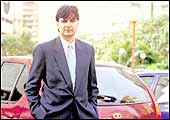 |
|
Rajiv Dube
|
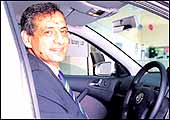 |
|
Imran Hassen
|
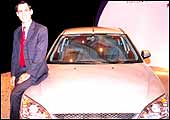 |
|
David Friedman
|
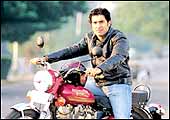 |
|
Siddhartha Lal
|
Everyone
has a favourite stretch of tarmac: the place where manufacturer
specifications of top speed and braking efficiency can be tested,
where the frustration of having to drive to work in bumper-to-bumper
traffic can be forgotten, at least for a few tens of minutes, and
where there's the road, the car, and the driver, no irritants such
as speed breakers, traffic lights, or pedestrians. We asked a collection
of auto-men to name their favourite drives. Most had a problem with
picking just one but, with some diplomatic prodding by us, that's
just what they did.
B.V.R. Subbu, President, Hyundai Motors
This is a man who loves driving, and he claims he has a speeding
ticket to prove his love for fast wheels. His favourite piece of
tarmac is NH 17, from Mumbai to Goa. And it isn't the destination,
but the journey that makes it so.
Aditya Vij, Managing Director, General Motors
India
This car man must love his job. His preferred drive is the 33-km
long one from Baroda to gm's plant at Halol (it's tolled). And he
loves testing his cars on the road from Mumbai to Nashik.
Rajiv Dube, Vice President, Tata Motors
What's it with auto execs and their plants? Dube loves the Mumbai-Pune
expressway. Mumbai is where the group's corporate HQ is; Pune hosts
the plant. Dube claims that driving down to Pune is faster than
taking a commercial flight.
Imran Hassen, Managing Director, Skoda Auto
India
The Mumbai-Pune expressway is a favourite of Hassen's. However,
he thinks that unless drivers are really sure of their skills they
shouldn't drive too fast. Indian roads may look smooth, he warns,
but they are not anything to write home about.
David Friedman, Managing Director, Ford India
Friedman doesn't need any prompting to pick his choice; he finds
our query ridiculously easy. "Pondicherry-Chennai on the East
Coast Road," he says. "Fresh sea breeze and straight over
the salt flats-it is a great road."
Siddhartha Lal, CEO, Royal Enfield
As one would expect him to do, Lal loves biking around. When he
was in Delhi he would take his Bullet into the hills around Manali.
Chennai, where he is based now, doesn't afford him such luxuries.
Maybe he should check out East Coast Road. And keep an eye peeled
for Friedman in his Mondeo.
-Kushan Mitra
BOOKS
The World As Nemesisto bring about catastrophe.
The
ghosts of tomorrow's machines will haunt us tonight more than at
any other time. There have always been a few technologically au
courant mainstream writers who pick up a thread from contemporary
technological R&D and weave a novel around it. Narrow in on
the dark side of your technology, and you will not find it difficult
to plot human characters of adequate nastiness, venality, or stupidity
to bring about catastrophe.
In the mid-nineties, public consciousness fuelled
by talk of biological weapons in Iraq and the former Soviet Union
was ripe for Richard Preston's non-fiction frightener on deadly
agents like the Ebola virus, The Hot Zone (1994). He followed that
up with a novel that considered what they could do if not-so-accidental
contamination were to take place, The Cobra Event (1997). New York
City survives. Just.
More recently, nanotechnology's potential for
packing multiple intelligences of a higher order into individual
units that would be dwarfed by dust particles has not gone unnoticed
by those who wish to give us thrills. Late in 2002, two best-selling
authors strutted their stuff. Dean Koontz released By the Light
of the Moon. Meanwhile, Michael Crichton, who has been doing this
sort of technology-as-perverted-by-bad-people thing more successfully
than anyone else since The Andromeda Strain (1969) released Prey.
Koontz's book is less explicit, and so possibly less convincing
about the technology than is Prey, which in turn is a far less engaging
book, largely because as usual Crichton's human characters are only
marginally easier to warm to than his technological creations. Yet,
both graphically illustrate the unique horrors of nanotech gone
awry.
But the truly malign can often assume the most
mundane form. Like a database, for instance. The most visible side
of this may be your credit card or your mobile phone. The relevant
databases may tell anyone who knows where to look a lot more about
yourself than you might want communicated.
Lury.gibson, a partnership between writers
Adam Lury and Simon Gibson, wrote Dangerous Data three years ago.
Readers discovered that there were more than just cellphones and
banks to track them by. The scale of data gathering on the individual
in the developed world is already huge; on average some 200 companies
hold data on an actively employed adult. In a city like London one
might typically come across 300 surveillance cameras in a given
day.
They also discovered a new kind of private
eye. Arthur C. Dogg is a master of cyber tracking. For a steadily
rising number of people technology drives almost everything they
do. The electronic trails they leave as they shop, travel, or transact
say far more about them than any other evidence. In showing us how
good Dogg is at tracking people, lury.gibson are merely telling
us about about the power of technology that you use-and largely
ignore-every day.
With Blood Data, their 2002 follow up, they
examine the same pervasive technology in the context of what is
your ultimate database, your DNA. As they write, when you bleed,
you're downloading data, because your blood carries your genetic
code.
Although your genetic code can predict things
about you that you don't know yet, it isn't your personal or private
data. Someone is storing, retrieving, mining, filtering, and processing
this data. Your data. It's really no different from the way they
might work on your financial transaction history. And only people
like Dogg know how to navigate this weird world where Nemesis is
a database.
-Hari Menon
HEALTH
NOTES
The Brainworm Bit
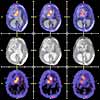 There
are worms. And then, there are worms. This writer quite liked the
worms that appear in cult science-fiction motion pic Dune: enormous,
stately, and not at all repulsive. Worms have been in the news recently.
There was So. Big, the worm of a different type that caused havoc
with computers. And there was the tapeworm that caused neurocysticercosis-call
it worm-in-the-brain-syndrome if you will-in Indian tennis ace Leander
Paes. Few thoughts are as excruciatingly painful as that of a worm
in the head. That understated classic Star Trek: The Wrath of Khan
has an alien worm that induces implicit obedience in its hosts when
it is inserted into their brains (through the ear). There
are worms. And then, there are worms. This writer quite liked the
worms that appear in cult science-fiction motion pic Dune: enormous,
stately, and not at all repulsive. Worms have been in the news recently.
There was So. Big, the worm of a different type that caused havoc
with computers. And there was the tapeworm that caused neurocysticercosis-call
it worm-in-the-brain-syndrome if you will-in Indian tennis ace Leander
Paes. Few thoughts are as excruciatingly painful as that of a worm
in the head. That understated classic Star Trek: The Wrath of Khan
has an alien worm that induces implicit obedience in its hosts when
it is inserted into their brains (through the ear).
The tapeworm, Taenia Solium, is pretty common
in India. Its tissue-invading larval form (cysticercus cellulosae)
is not so common. Ingested, and once it makes its way into the bloodstream,
the worm or the larva can go just about anywhere within the human
body (anyone seen Innerspace). When the larva stations itself in
the brain, it creates a nodule-like structure around itself. This
causes headaches, seizures, vomiting and, in some cases, death.
The worm itself is far more benign. Most people with worms in their
brains do not exhibit these symptoms; nor do they face any kind
of health risk. That's when the worm is alive. When it dies, it
degenerates, and this creates a lesion. Ergo, if you have a worm
in your brain you'd better pray for its continued well-being.
Anyone who has been through a high-school course
in biology knows the lifecycle of the tapeworm: pigs to humans to
pigs again. But as Dr Mukul Verma, a senior consultant and co-ordinator
of the neurology department at Delhi's Indraprastha Apollo Hospital
explains, "It is a myth that only non-vegetarians are at risk
(from neurocysticercosis); the larvae are passed through unwashed
and uncooked vegetables, green chutneys, and salads more than they
are passed through pork.''
Doctors suggest that neurocysticercosis can
be avoided simply by eating well-washed and well-cooked vegetables,
quality pork, and drinking bottled water. And if you have contracted
it-symptoms such as seizures, dizziness, and vomiting will follow-a
high-resolution scan should be able to detect cysts in the brain.
If there are few, the larvae can be killed using albendazole; if
your brain is a larvae sweat-shop, doctors are likely to let the
body's immune system deal with the problem. "When the drug
tackles the cysts, it causes swelling; if there are too many cysts,
use of the drug could cause the brain to swell a lot; this might
be fatal," says Dr Verma. Talk about a swollen head.
-Ananya Roy
HEALTH
SNIPPETS
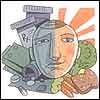 SLEEP-REDUCTION SLEEP-REDUCTION
Lose weight while you sleep sounds suspiciously like the spam that
regularly finds its way into our inboxes. Actually, there's science
behind the claim, which revolves around consuming hydrolysed collagen
at bed-time (make sure your dinner is at least three to four hours
old by then). The collagen strengthens lean muscle tissue and stimulates
the burning of fat. Since muscle is heavier than fat that may mean
you lose inches before you start losing pounds, but still, you'd
be fitter.
(Source: nutritionbreakthroughs.com)
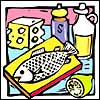 YOU
ARE WHAT YOU EAT YOU
ARE WHAT YOU EAT
Well, you probably knew that already. Here is a quick update
Fish: apart from all other
benefits, eating fish can prevent the onset of Alzheimer's
Vitamin C: good not just as a
cold-preventive but as a skin protector
High-fat cheese: Not really great
for the heart, but can prevent breast cancer in women
|
